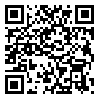BibTeX | RIS | EndNote | Medlars | ProCite | Reference Manager | RefWorks
Send citation to:
URL: http://ioh.iums.ac.ir/article-1-1544-en.html
Background and aims: Health care is one of the areas with high risk. Nowadays, leader organizations in healthcare recognize the fact that the side effects and the failure of the system should be managed and controlled. In this context, one of the most important topics is human error. One of the issues related to health care is “Infection Control” which is much discussed in dentistry. This research was carried out in order to identify, prevent and reduce human errors in the field of personal protective equipment and hand washing in infection control.
Methods: This study was conducted in a semi-private dental clinic in Tehran. Data collection was done through Interviews with dentists who are specialists, reports and documentation of the clinic and the analyst’s observations in dentists’ duties which were related to the usage of personal protective equipment and hand washing in infection control. After data collection, data analysis was done by SHERPA technique and then control solutions were presented.
Results: 60.49% of the identified errors were action errors, 2.47% retrieval, 3.70% information communication, 9.87% selection and 23.45% were checking errors. The most percentage was for the action error and the lowest one was for retrieval error. The most important common errors which were found in this research are not washing hands between each patient, touching devices that doesn’t have disposable cover, adjusting the mask with contaminated gloves during treatment, using glasses that can not protect eyes in all sides and not changing the mask in standard period of time.
Conclusion: The identification of errors, the results of the risk assessment and provided solutions for controlling risks, represents that, SHERPA is an appropriate and implementable technique for the field of dentists’ infection control like other researches that have been done in the health care.
Received: 2015/05/24 | Accepted: 2015/08/1 | Published: 2015/12/16
| Rights and permissions | |
 |
This work is licensed under a Creative Commons Attribution-NonCommercial 4.0 International License. |





